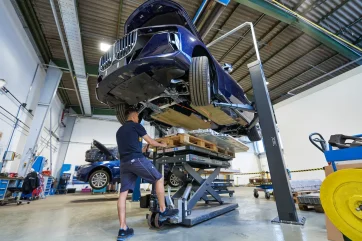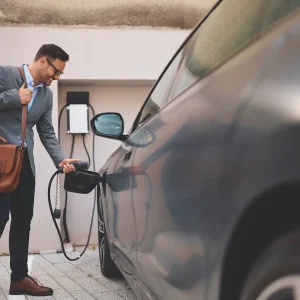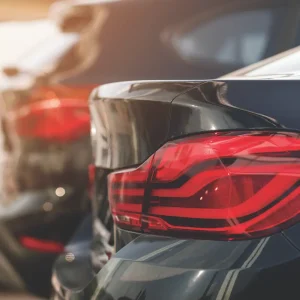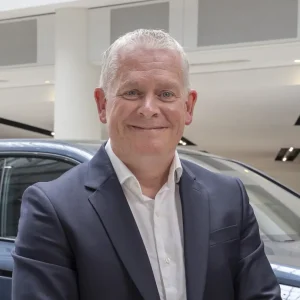
Electric car maintenance is a whopper of a catch 22. Yes, the things have fewer wearable parts, so there is less to go wrong and – although it is a generalisation – they typically undercut ICE equivalents on SMR costs.
Things do not look so rosy if the battery goes wrong, though, and while a seven or eight-year warranty should really be enough to allay some fears, the perceived costs, time and effort involved in repairs are scary for a manufacturer honouring the warranty or a fleet contemplating vehicle-off-road time. It is, after all, one of the pinch points for misinformation about EVs and among the reasons why they cost more to insure and are quickly written off (see our 2024 feature ‘Cover Charge’ for more).
Fortunately, failure rates are low. Based on a sample of 15,000 EV drivers and not including recalls or accident damage, Cox Automotive’s nascent EV Battery Solutions arm reported in-warranty failure rates of between 1.3% and 3.1%, depending on the type of battery, and out-of-warranty rates of 2.6% to 7%. The DVSA’s average MOT failure rate for July to September 2024 was 27.7%, so batteries look pretty good by comparison.
The new Cox business is part of a tie-up with DHL to establish a 35,000-square-foot battery repair and manufacturing centre at the latter company’s site in Rugby. It is believed to be the UK’s biggest such facility and follows equivalent Cox operations in the US and Europe. The service is designed for fleets and manufacturers, will deal with batteries within and outside the warranty period and tap into DHL’s logistics abilities to transport them.
A mixed picture
A major international company throwing its heft behind battery repairs suggests they must be worthwhile but, as with all things EV, the reality is not black and white.
“It depends on the pack – there’s no uniformity,” explains David Gray, client director at the new Cox business, speaking at the Vehicle Remarketing Association’s first meeting of the year, “it comes back to the economics of the repair. Do you have access to the available parts and who’s going to carry the liabilities associated with that pack being back in use?”
He admits that batteries are generally becoming more difficult – though not impossible – to repair, as manufacturers engineer them to the most cost-effective and marketable standards but claims there is appetite to fix them and that repairs are “viable”.
“What happens if a recall event comes around and you need to deal with 50,000-plus packs to get them fixed and back on the market before a household-name brand is thinking about a buyback of those vehicles, with massive cost implications? Major EV insurers are already talking to us about how to reduce costs by offering repairability of the pack for extension of its first life.
“It doesn’t work for all battery technologies or for all types of damage, but there are instances now where we can carry out viable, economic repairs that will allow dealers to retrieve cars into saleable condition. It’s within reach. Our belief is that this situation will improve quite quickly. However, it must be pointed out that a repairable battery design tends to be a more expensive one, and the technology used by some manufacturers creates issues.”
An established practice
Battery repairs, and broader EV-specific maintenance programmes, have existed for a while. The Hybrid and Electric Vehicle Repair Alliance (Hevra) was formed in 2017 and is a not-for-profit network for technicians to tap into expertise around EV repairs. Most of its 330-strong UK members are independent garages, but they include some authorised repairers and main dealers, all of whom pay an annual subscription fee of between £600 and £1,560 plus VAT, depending on the membership level (there are three).
“Imagine you’ve got a problem with your car, and you take it to the garage,” explains Hevra’s founder and technical support lead, Peter Melville, “they need to get familiar with the faults, work out how it should work and which bit of it isn’t working, then come towards a fix. Essentially, we try to do that legwork once… [so] every time we see the same fault again, we can reproduce that diagnosis and repair method in different garages.
“It’s like that bit in Harry Potter, where he has a textbook, and someone’s written all these little tips in the margins that get him to the top of the class.”
The organisation’s focus is the entire vehicle, not just the battery, and Melville says technicians often encounter problems with cabin heating and plug-in charging components, because they are unique to EVs (heaters are standalone items, as warmth comes from the engine on ICE vehicles) and therefore less tried and tested than well-established parts.
As for batteries, he says there is more to them than the cells, so repairs can comprise ancillary components, such as circuit boards that measure the cell voltages, cooling systems and disconnection devices.
On cell repairs, though, Melville agrees with Gray: “This is when what car you’ve decided to buy makes a big difference,” he explains, “for example, BMW, Volkswagen, Renault, Nissan, Jaguar – that’s not necessarily an exhaustive list – but there are manufacturers out there who consider the battery to be an assembly, made of lots of different bits. If you’ve got one of those cars, then it’s good news, because you can buy all the bits, establish what the problem is and do the repair.
“But if you’ve got a different manufacturer that considers the battery to be one part, that is when it becomes a bit trickier. If you take it to the dealer, they’ll say – often quite correctly – ‘this one part has failed, it’s really expensive and it’s replaced as one unit’. That’s what we find with Mercedes, Peugeot, Citroen and various others that consider the battery to be a non-repairable thing. And that isn’t just the policy of the parts department or the company’s internal politics – it tends to be a bit of an engineering difference.”
Indie hits
Independent garages may not be the traditional first port of call for fleets and leasing companies with maintenance contracts, but Melville says they are used by the corporate sector, because they can be faster and more convenient routes to repair.
“We have had conversations with various leasing companies, and some of them are showing a preference towards using independents,” he explains, “I know they’ve had some feedback from their customers that [independents’] customer service is better, their lead times are shorter, and they tend to be nearer.
“I think the leasing company is thinking, ‘actually, if the customer prefers this and it’s potentially going to be cheaper, then it’s a bit of a no-brainer’. They’ve approached us because they’re a bit wary about going to just anyone… we only let people in who have that foundation [level three in electric and hybrid vehicle repair] qualification.”
The Institute of the Motor Industry (IMI), which administers such training programmes, last year predicted a 3,000 EV technician shortfall by 2031, rising to 16,000 by 2035, which suggests those in the EV repair business are unlikely to be short of work.
More recently, auction firms have reported steadier used electric car prices. In March, Indicata claimed EV values had “bottomed out,” having reduced by only 0.8% between July 2024 and January 2025. Manheim said used EV prices had “stabilised,” citing the average price of a two-to-four-year-old electric car at £15,142 as of the end of February, up 1.1% (£162) from January but down 6.5% (£1,061) year-on-year – 23% (£3,477) cheaper than an equivalent diesel car and 11.6% (£1,750) more expensive than an equivalent petrol.
EVs have been anything but predictable and there is a bleakness to the IMI’s outlook for technician numbers. However, Cox’s and Hevra’s efforts show willing at two ends of the same spectrum, and if a broader and more capable repair network and stabler residual values are signs of things to come, then fleets should take some solace. If nothing else, sensible pricing and practical repairs are good counterweights to misinformation.
Supported by:






